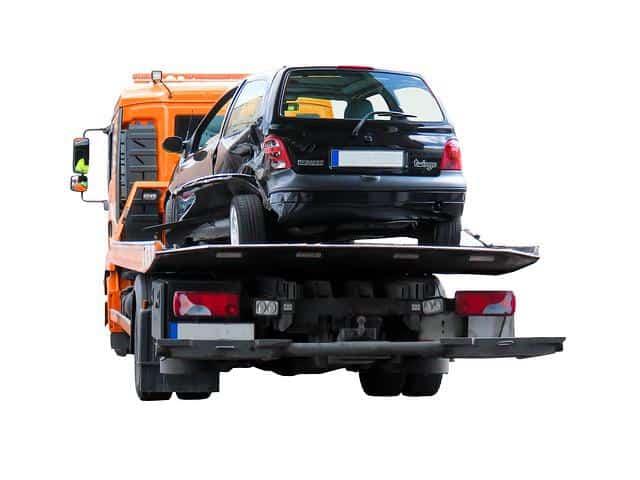Table of Contents
- Introduction
- Nevada’s At-Fault System Explained
- The Role of Police Reports in Fault Determination
- How Insurance Companies Evaluate Fault
- Understanding Nevada’s Comparative Negligence Rule
- Key Evidence Considered in Fault Determination
- When to Seek Legal Assistance
- Conclusion
Being involved in a car accident can be both overwhelming and confusing, especially when it comes to figuring out who is responsible for the damages. In Nevada, establishing fault is vital for ensuring fair compensation and holding the right parties accountable. Whether you are an accident victim or concerned about potential liability, understanding Nevada’s fault determination process can help you make informed decisions. For those in need of legal guidance navigating these matters, a Las Vegas car accident attorney can provide crucial support and advice throughout your case.
This guide uncovers how fault is assessed in Nevada car accidents, highlighting the legal principles, investigative steps, and key evidence that influence these outcomes. With clear explanations and a focus on Nevada’s specific laws, drivers can feel empowered to protect their interests after a collision. Navigating these situations is not always straightforward, but knowing what to expect can make the process less daunting and ensure that your rights are preserved.
Nevada’s At-Fault System Explained
Nevada operates an at-fault insurance system for car accidents, which means the driver who causes the crash is legally and financially responsible for the resulting costs. To comply with Nevada law, every driver must maintain minimum liability coverage of $25,000 for bodily injury per person, $50,000 for bodily injury per accident, and $20,000 for property damage. These baseline insurance requirements exist to safeguard all parties by ensuring injured drivers or passengers have a channel to recover their losses from the at-fault party’s insurance provider. Understanding your coverage obligations is fundamental not just for your legal security, but also for protecting your finances should you ever be involved in an accident.

The Role of Police Reports in Fault Determination
After a car accident in Nevada, police officers typically respond to the scene and file an official report. This police report plays a crucial role in the aftermath, as it provides a neutral overview of the events and helps both insurance companies and courts piece together what happened. The report typically details the statements of drivers and witnesses, diagrammed scene information, visible vehicle damage, and any citations issued for traffic violations.
While a police officer may suggest fault within the report, their opinion does not legally decide the matter. Insurance companies, and potentially a court, will perform their own independent reviews using the police report as a foundational piece of evidence.
How Insurance Companies Evaluate Fault
Insurance companies do not automatically rely on police findings; they send adjusters to investigate independently. Adjusters may review photographs of the accident, evaluate vehicle damage, interview witnesses, study the police report, and analyze relevant medical records. They use these findings to assign a “percentage of fault” to each driver involved, which directly determines eligibility for compensation and the payout amounts. It’s wise to be cautious and precise when speaking with insurance adjusters, since your statements may affect the fault evaluation and the eventual claim settlement. If you’re unsure how to navigate these communications, legal experts recommend consulting with a car accident lawyer early in the process.
Understanding Nevada’s Comparative Negligence Rule
Nevada employs a modified comparative negligence standard. This means that in a multi-car collision, more than one party may share some degree of blame. If you are found to be less than 51% at fault for the accident, you can still recover damages; however, your compensation is reduced by your percentage of fault. For example, if your loss was $10,000 and you were 30% responsible, you could recover $7,000. If you are found 51% or more at fault, you lose the right to compensation entirely. This approach encourages thorough investigations and fair outcomes that reflect each party’s level of responsibility.
Key Evidence Considered in Fault Determination
Establishing fault relies heavily on the quality and quantity of evidence collected at the scene and during the investigation. The three types of evidence considered most influential are:
- Photographs and Videos: These can visually document vehicle positions, skid marks, damage, traffic controls, and road conditions to recreate the scene.
- Witness Testimonies: Bystanders or uninvolved parties who saw the accident can offer unbiased accounts of what happened.
- Traffic Citations: Issuance of a citation, such as for running a red light or speeding, often signals negligence or a clear violation that contributed to the accident.
Together, this evidence can significantly impact insurers’ and courts’ decisions on which driver—or drivers—are responsible, and to what degree. Promptly collecting and preserving this proof is particularly important if there is disagreement about events or if the insurance evaluation feels unjust.
When to Seek Legal Assistance
Complex or disputed accident cases can quickly become difficult to resolve alone. If there are challenges in determining fault, serious injuries, or disagreements with insurance findings, it is recommended to seek legal counsel. A qualified personal injury attorney can help clients gather and present supporting evidence, build persuasive arguments for negotiations, and, if needed, represent victims in court proceedings. Furthermore, lawyers experienced in Nevada accident law will ensure clients are not unfairly assigned excess blame, thereby maximizing potential compensation.
Conclusion
Understanding how fault is established in Nevada car accidents can streamline the claims process, prevent common insurance pitfalls, and increase your chances of a fair settlement. Familiarize yourself with at-fault insurance rules, consistently gather and safeguard evidence, and don’t hesitate to seek legal advice when circumstances are complex or contested. Empowered by knowledge and preparedness, any Nevada driver can more confidently handle the aftermath of a collision.







